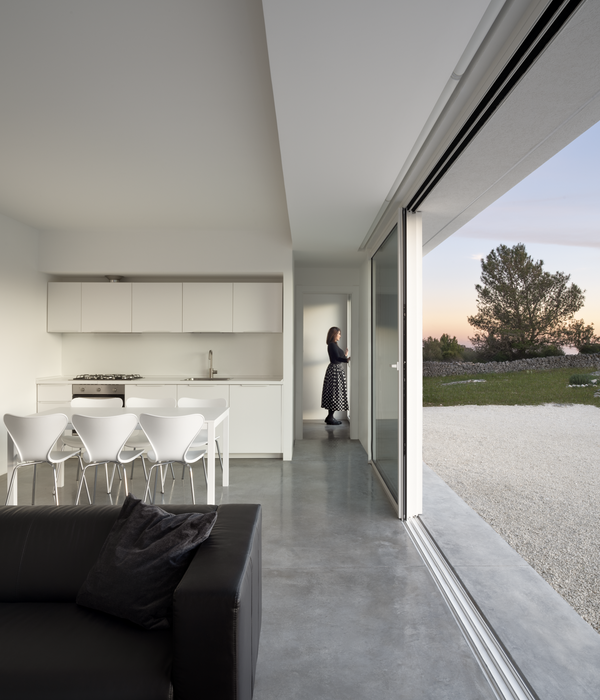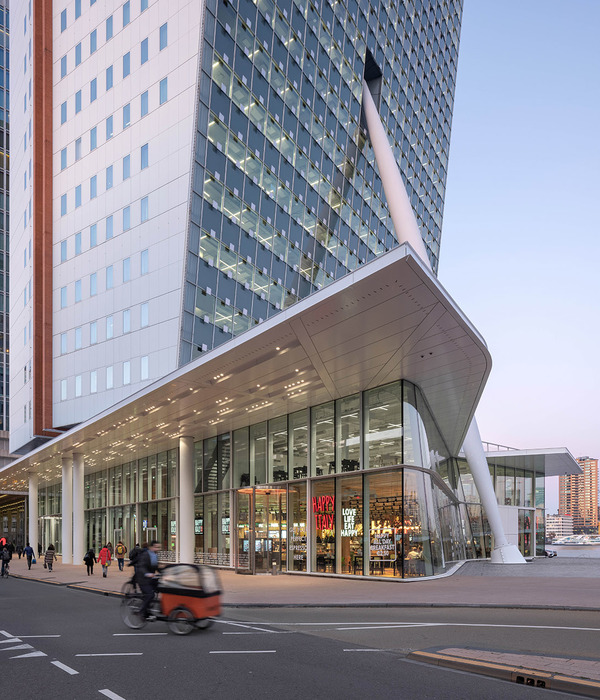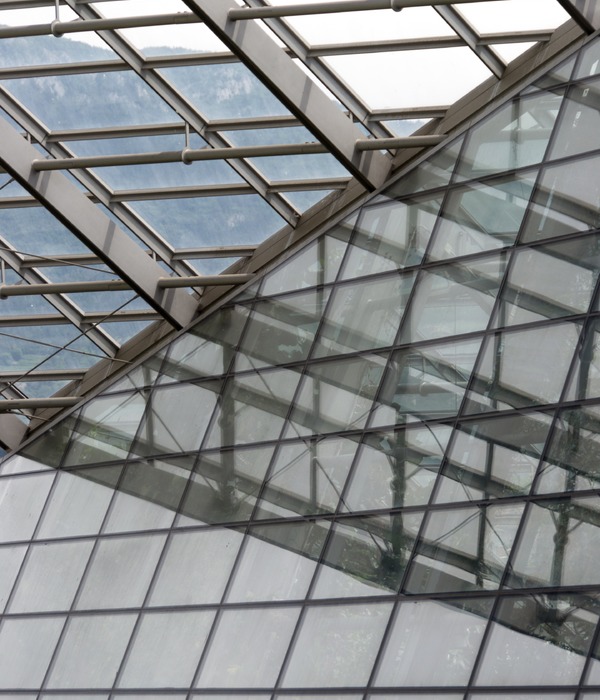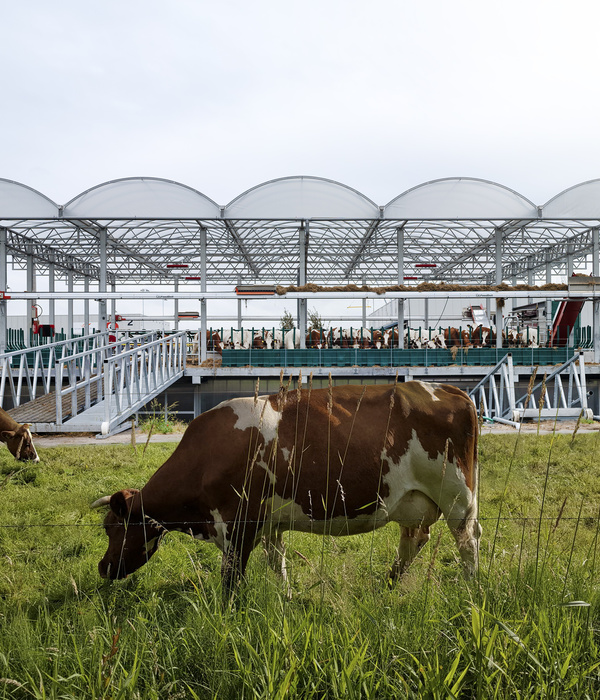场地与屋顶 The Site and the Roof
该项目的位置较为隐蔽。如果不进入场地的话,很难清晰地感知到项目的位置。地势的轻微起伏和高大的垂直树木,强化了其隐蔽的特征。而设计的目的则是为了让人们可以清晰地感知这一土地特征。
The location of the project has a hidden feature that cannot be clearly perceived if one does not enter the site. The hidden features of the location are the slight slope of the land and the tall vertical trees. The purpose is to elevate this feature of the site is clearly perception.
▼项目概览,overall of the project © Beersingnoi
因此建筑的设计将一个平面放置在场地上,和场地的缓坡形成对比,以凸显该位置的地形条件。同时,形成该平面下的一个功能性空间。
The design of the building therefore uses a flat plane placed on the site to compare the slope of the site and to recognize the condition of the location, at the same time, it’s also a functional space under this plane.
▼平面下的功能性空间,a functional space under this plane © Beersingnoi
平面因而成为屋顶——该建筑基础而原始的要素。屋顶下的活动也随之发生,使用者们可以尽情地享受空间,他们或坐或躺,或徜徉在自然的变化之中。
The plane becomes the roof that can be said to be the fundamental and original element of architecture. Activities under the roof then take place and allow the occupants to manage the space to sit, lie, and walk while perceiving nature’s movement.
▼屋顶下的活动随之发生,activities under the roof then take place © Beersingnoi
▼使用者们可以尽情地享受空间, the occupants to manage the space to sit, lie, and walk © Beersingnoi
真理、地理与空间 Truth, Geography and Room
什么才是尊重自然呢?是保持原始地面的变化?亦或不变?自然的真理可以说是变化、流动的,而不是固定不变。无论是人为造成还是自然因素的影响,自然,如地表一样总是在变化。自然中没有真理吗?这些问题在施工过程中以及设计上层空间(用于休息和进行各种活动的区域)时不断被提及。
What is respect for nature? To keep the original ground in place or not? Could it be said that the truth of nature is only changing, moving, and not stabling. The nature such as ground surface that is always changing, whether by the hands of man and nature. Could it be said that there is no truth in nature. These questions raise issues during construction in progress and during the design of the attic space which is an area for sitting and doing various activities.
▼用于休息和进行各种活动的区域,an area for sitting and doing various activities © Beersingnoi
由于建筑施工,地面发生了变化。对结构地基的挖掘作为施工过程中人为变化的代表性表现形式被保留下来。这些经过挖掘的砾石和混凝土结构共同构成了用餐的空间。每个空间都参照了标高,并与建筑地基的位置重合。
The ground was changed due to building construction behavior. The excavation of the structural footing was preserved as representative manifestation of the man-made variations in the site during the construction process. These excavated spaces became rooms for drinking and eating. Each of the rooms is referenced to the level and overlaps the position of the building foundation.
▼经过挖掘的砾石和混凝土结构共同构成了用餐的空间,these excavated spaces became rooms for drinking and eating © Beersingnoi
▼用餐的空间,drinking and eating area © Beersingnoi
结构、施工与建筑空间 Structure, Construction and Architectural Space
结构、施工与建筑空间被融入了设计中,以方便理解。首先是结构痕迹,例如不同厚度的屋顶,支撑构件的高度等元素。其次,施工痕迹,如相对于不同房间区域的位置 – 具有不同颜色和纹理的混凝土。最后是建筑空间,例如空间与下方地基的水平关系,每个空间与楼梯状支撑构件的高度之间的关系等。
Structure, Construction and Architectural Space were integrated into the design that could be understood. Firstly, Structural traces such as the different thickness of the roof, height of supporting elements. Secondly, Construction traces such as root foundations relative to different room areas – concrete with different colors and textures. Finally, Architectural spaces, such as rooms in relation to level of foundations beneath, the height in each room in relation to the stair-shaped supporting elements.
▼建筑的支撑构件,supporting elements © Beersingnoi
▼支撑构件与建筑空间,supporting elements and architectural space © Beersingnoi
▼夜景,night view © Beersingnoi
▼轴测图,axonometric © JOYS Architects
▼平面,plan ©JOYS Architects
▼立面,elevation © JOYS Architects
{{item.text_origin}}












